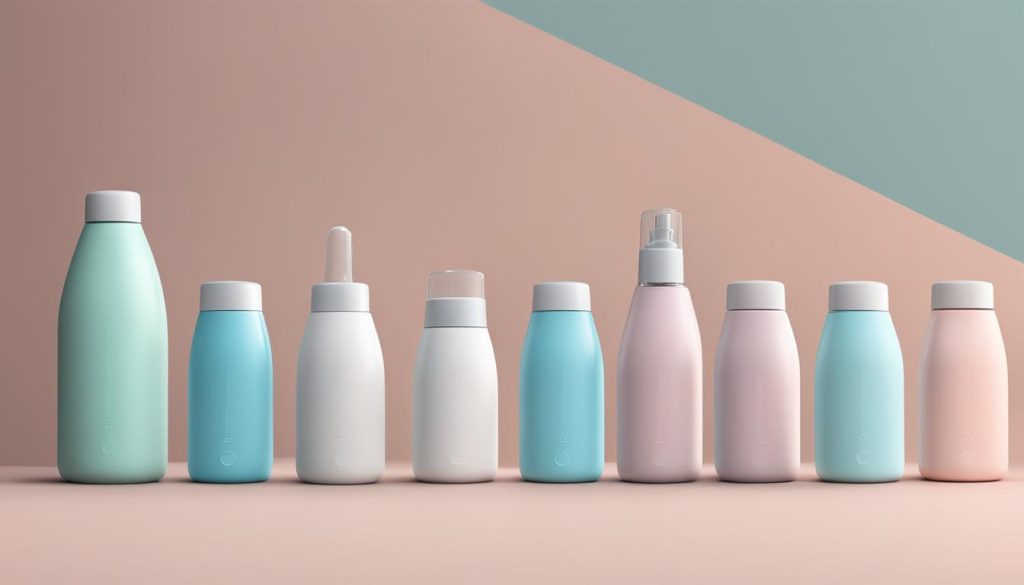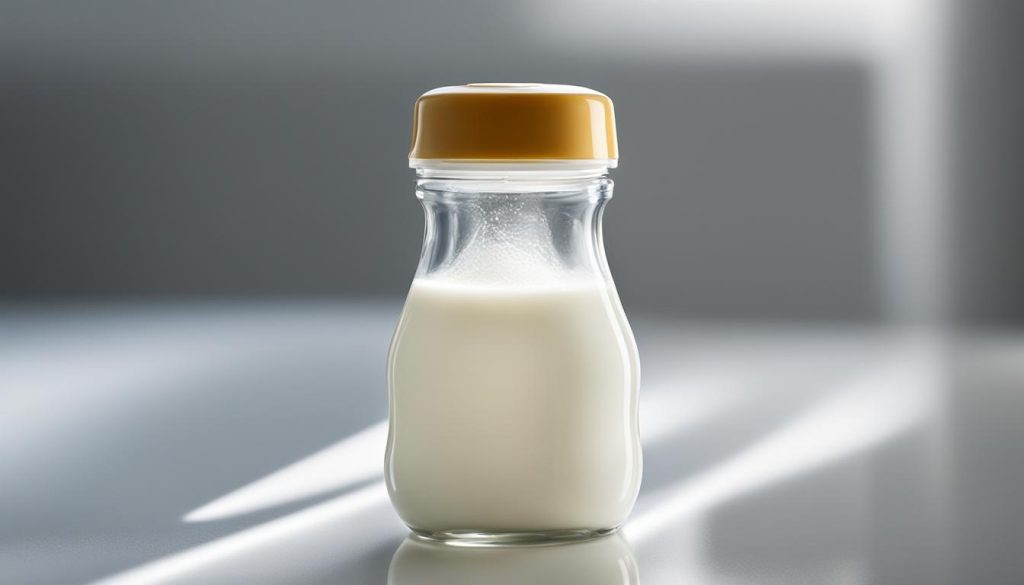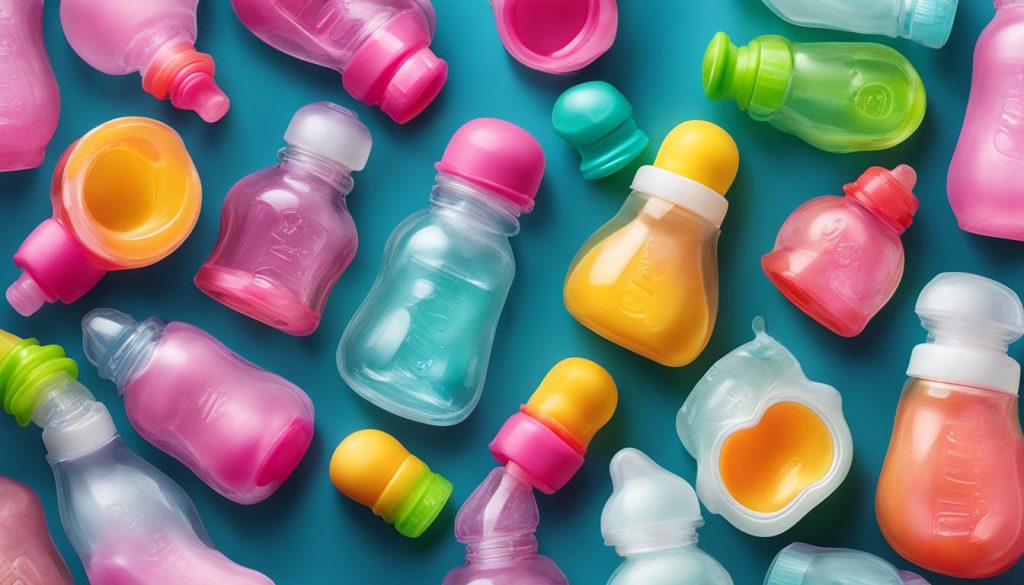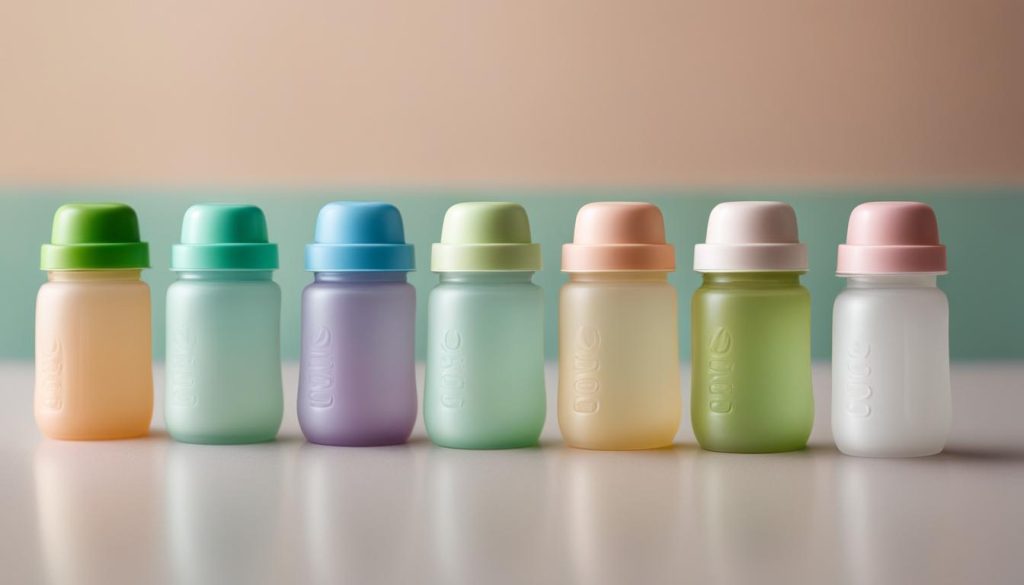Welcome to my comprehensive guide on the top baby bottles for 2024. As a professional copywriting journalist, I have researched and reviewed the best baby bottles in the market to help you make an informed decision. Whether you’re a new parent or looking to upgrade your current baby bottles, this article will provide you with valuable insights and recommendations. From top rated baby bottles to detailed baby bottle reviews, I’ve got you covered.
Before diving into the specific baby bottle options, let’s take a closer look at the global Baby Bottles and Bottle Feeding Accessories market. By 2028, this market is projected to reach significant growth, offering exciting development strategies and competitive landscapes. Key players in the industry, including Bobo, Lovi, NUK, Nuby, and more, are continuously innovating to meet the needs of parents and infants.
Throughout this guide, we’ll explore different types of baby bottles, discuss the importance of baby bottles in infant feeding, compare various bottle materials, examine different nipple types, provide tips on bottle maintenance and sterilization, and share expert advice and recommendations.
Stay tuned for the upcoming sections, where I’ll share in-depth knowledge and insights to help you choose the perfect baby bottle for your little one.
Types of Baby Bottles
Baby bottles come in various types, each with its own unique features and benefits. Understanding the different options available can help parents make an informed decision when choosing the most suitable bottle for their baby’s needs.
Glass Bottles
Glass bottles are a popular choice among parents seeking a durable and eco-friendly option. They are made from tempered glass, which is resistant to breaking and shattering. Glass bottles are easy to clean and sterilize, ensuring optimal hygiene for your baby’s feeding. Additionally, glass bottles do not contain harmful chemicals such as BPA, making them a safe choice for your little one.
Plastic Bottles
Plastic bottles are lightweight and convenient for on-the-go feeding. They are typically made from BPA-free materials to ensure the safety of your baby. Plastic bottles often come with anti-colic features, such as venting systems or angled designs, which help reduce the intake of air and minimize discomfort during feeding.
Silicone Bottles
Silicone bottles are a newer option in the market. They are soft and flexible, resembling the feel of a breast, which can be beneficial for breastfed babies transitioning to bottles. Silicone bottles are also lightweight and unbreakable, making them a practical choice for travel and outdoor activities.
| Bottle Material | Features | Advantages |
|---|---|---|
| Glass Bottles | Durable, easy to clean, BPA-free | Retains heat well, eco-friendly |
| Plastic Bottles | Lightweight, shatterproof, anti-colic features | Convenient for travel, BPA-free |
| Silicone Bottles | Soft, squeezable, lightweight | Resembles breast, unbreakable |
Importance of Baby Bottles in Infant Feeding
When it comes to infant feeding, baby bottles play a crucial role in providing nutrition and convenience for both parents and babies. While breastfeeding is recommended as the best source of infant nourishment, not all parents are able to breastfeed exclusively. Baby bottles offer a safe and reliable alternative, allowing babies to receive the necessary nutrients they need to grow and develop.
One of the key benefits of using baby bottles is that they provide a way for parents to track the amount of milk or formula consumed by their babies. This is especially important in the early stages of infancy when it is crucial to ensure that the baby is receiving adequate nutrition. By using bottles, parents can monitor the intake and make adjustments if necessary.
Baby bottles also provide flexibility when it comes to feeding arrangements. While breastfeeding is a special bond between mother and child, using bottles allows other caregivers to participate in the feeding process. This can be particularly helpful for parents who need to share the responsibilities or for families with busy schedules. It gives parents the freedom to enlist the help of family members, friends, or childcare providers, allowing them to take a break or attend to other tasks while ensuring their baby is still receiving proper nourishment.
Moreover, baby bottles aid in the transition from breastfeeding to bottle feeding. For some babies, the switch from breast to bottle can be challenging. Bottles provide a familiar shape and texture that can help ease the transition for babies who are used to breastfeeding. They offer a sense of comfort and familiarity, making the shift to bottle feeding a smoother and less stressful process for both babies and parents.
The Benefits of Baby Bottles in Infant Feeding
| Benefits | Description |
|---|---|
| Accurate tracking | Baby bottles allow parents to measure the amount of milk or formula consumed by their babies, ensuring proper nutrition. |
| Flexibility | Bottles enable other caregivers to participate in feeding, providing parents with more freedom and support. |
| Smooth transition | For babies transitioning from breastfeeding to bottle feeding, bottles offer a familiar shape and texture, easing the process. |
In conclusion, baby bottles play an important role in infant feeding by offering a convenient and safe way to provide nutrition to babies who are not breastfed exclusively. They allow parents to accurately track the amount of milk or formula consumed, provide flexibility in feeding arrangements, and aid in the transition from breastfeeding to bottle feeding. By understanding the benefits of baby bottles, parents can make informed decisions about their infant feeding journey and ensure the well-being and nourishment of their little ones.
Comparison of Baby Bottle Materials
When it comes to choosing a baby bottle, parents have a range of options when it comes to materials. Each material has its own set of advantages and considerations to keep in mind. In this section, I will compare the three most common baby bottle materials: glass, plastic, and silicone, highlighting their features and benefits.
Glass Bottles
Glass bottles have long been a popular choice among parents, and for good reason. They are free from harmful chemicals like BPA (bisphenol A) and phthalates, ensuring that no potentially harmful substances leach into the baby’s milk or formula. Glass bottles are also easy to clean and sanitize, making them a hygienic option. Additionally, glass bottles retain heat well, keeping the contents warm for longer.
Plastic Bottles
Plastic bottles are lightweight and shatterproof, making them a convenient choice for parents on the go. However, it’s important to note that not all plastic bottles are created equal. When choosing plastic bottles, opt for ones that are labeled as BPA-free to ensure the safety of your baby. BPA is a chemical commonly found in plastics that has been linked to potential health risks. BPA-free plastic bottles offer the benefits of portability and durability without the concerns of harmful chemical exposure.
Silicone Bottles
Silicone bottles are a relatively newer option on the market but have gained popularity among parents. They are soft, squeezable, and lightweight, making them easy for babies to hold and manipulate. Silicone bottles are also heat-resistant, making them suitable for warming milk or formula. They are durable and can withstand regular use and cleaning. However, it’s important to ensure that the silicone used in the bottles is food-grade and free from harmful chemicals.
Overall, the choice of baby bottle material will depend on your personal preferences and priorities. Glass bottles offer peace of mind with their chemical-free composition, while plastic bottles provide convenience and durability. Silicone bottles combine the benefits of softness and heat-resistance. Whichever material you choose, make sure to follow proper cleaning and sterilization practices to ensure the hygiene and safety of your baby’s bottles.
| Glass Bottles | Plastic Bottles | Silicone Bottles | |
|---|---|---|---|
| Material | Glass | BPA-free Plastic | Food-grade Silicone |
| Advantages | Chemical-free composition, easy to clean, retains heat | Lightweight, shatterproof, portable | Soft, squeezable, heat-resistant |
| Considerations | Potential for breakage, heavier than other materials | BPA concerns if not labeled as BPA-free | May not be suitable for all babies due to softness |
Types of Baby Bottle Nipples and Their Benefits
When it comes to choosing the right baby bottle for your little one, the type of nipple plays a crucial role in ensuring a comfortable and efficient feeding experience. Baby bottle nipples come in different shapes, sizes, and designs, each with its own unique benefits. Understanding the different nipple types can help you make an informed decision that meets your baby’s specific needs.
Standard Nipples
The most common type of baby bottle nipple is the standard nipple. It is designed to mimic the natural shape and feel of a mother’s breast, making it suitable for both breastfed and formula-fed babies. Standard nipples come in various flow rates, allowing you to choose the one that matches your baby’s feeding pace. Slower flow rates are ideal for newborns, while faster flow rates are suitable for older babies.
Wide-Neck Nipples
Wide-neck nipples have a wider base and a shorter length compared to standard nipples. This design closely resembles the shape of a mother’s breast, making it easier for breastfed babies to transition from breastfeeding to bottle feeding. The wider base also promotes a more natural latch and reduces the risk of nipple confusion. Wide-neck nipples are particularly beneficial for babies who alternate between breastfeeding and bottle feeding.
Anti-Colic Nipples
Many parents opt for anti-colic nipples to help reduce discomfort caused by excessive air intake during feeding. These nipples feature special vents or valves that allow air to escape, preventing the buildup of gas and reducing the risk of colic and spit-up. Anti-colic nipples are designed to provide a more comfortable feeding experience for babies with sensitive tummies.
| Nipple Type | Benefits |
|---|---|
| Standard Nipples | Mimics natural breast shape, various flow rates |
| Wide-Neck Nipples | Resembles breast shape, promotes natural latch |
| Anti-Colic Nipples | Reduces gas and colic, minimizes spit-up |
Choosing the right nipple for your baby’s bottle can greatly enhance their feeding experience. Consider your baby’s age, feeding preferences, and any special needs they may have. It’s always a good idea to try different nipple types to see which one works best for your little one. Remember, a comfortable nipple can make all the difference in ensuring a happy and contented baby during feeding time.
Tips on Bottle Maintenance and Sterilization
Proper maintenance and sterilization of baby bottles are essential for the health and well-being of your little one. By following these tips, you can ensure that your baby’s bottles are clean, safe, and free from harmful bacteria.
1. Cleaning Baby Bottles
Start by disassembling the bottle, separating the nipple, ring, and bottle. Rinse each component with warm water to remove any leftover milk or formula.
Next, use a bottle brush or a nipple brush specifically designed for cleaning baby bottles to scrub the interior and exterior of the bottle, paying extra attention to the nipple. Make sure to reach all the nooks and crannies to remove any residue.
After thoroughly cleaning the components, rinse them again with warm water. You can also run them through the dishwasher if they are dishwasher-safe, but handwashing is generally recommended for better control and to ensure thorough cleaning.
2. Sterilizing Baby Bottles
Sterilizing baby bottles helps kill any remaining bacteria that may be present and keeps your baby safe from infections. There are several methods you can use to sterilize baby bottles:
- Boiling: Place the disassembled bottles and nipples in a pot of boiling water for at least 5 minutes. Make sure all the components are fully submerged. Remove them using tongs and allow them to air dry on a clean towel.
- Sterilizer: Use an electric steam sterilizer or a microwave steam sterilizer. Follow the manufacturer’s instructions for the correct amount of water and sterilization time. Once sterilized, let the bottles air dry or store them in a clean, covered container.
- Sterilizing solutions: Some parents prefer using sterilizing solutions. These typically involve soaking the bottles and nipples in a solution for a specified period. Be sure to follow the instructions provided with the sterilizing solution.
It is recommended to sterilize baby bottles until your baby is at least six months old. After that, a thorough cleaning with hot soapy water is generally sufficient, unless your baby has a weakened immune system or other health concerns.
By following these bottle maintenance and sterilization tips, you can ensure that your baby’s feeding equipment is always clean, safe, and ready to use. Remember to inspect bottles regularly for any signs of wear and tear and replace them as needed to maintain your baby’s health and safety.
Expert Advice and Recommendations
As an expert in infant feeding, I have gathered valuable insights and recommendations for choosing the best baby bottles. When selecting a bottle for your little one, keep in mind the following tips and trends:
1. Consider Your Baby’s Needs
Every baby is unique, so it’s important to choose a bottle that suits their specific needs. If your baby is prone to colic or gas, opt for bottles with anti-colic features, such as vented nipples or bottles with built-in air vents. For breastfed babies, wide-neck nipples that mimic the shape of a breast can help with the transition from breastfeeding to bottle feeding.
2. Look for Innovative Designs
The baby bottle industry is constantly evolving, with new designs and trends emerging. Stay up to date with the latest innovations, such as bottles with ergonomic shapes for easy handling or bottles that promote self-feeding as babies grow. Innovative features like measurement markings, easy-to-clean parts, and leak-proof designs can enhance your bottle-feeding experience.
3. Read Baby Bottle Reviews
Before making a purchase, take the time to read baby bottle reviews from trusted sources. Reviews can provide valuable insights into the pros and cons of different brands and models. Look for feedback on durability, ease of cleaning, nipple quality, and overall user satisfaction. By considering the experiences of other parents, you can make a more informed decision.
4. Choose BPA-Free and Easy-to-Clean Bottles
When it comes to your baby’s health and safety, it’s crucial to select BPA-free bottles. BPA (bisphenol A) is a chemical that may have negative effects on your baby’s development. Additionally, opt for bottles that are easy to clean, with minimal parts that can trap milk residue. Bottles with wide openings and detachable components make cleaning a breeze.
By following these expert tips and keeping an eye on the latest trends, you can confidently choose the perfect baby bottle for your little one’s feeding needs. Remember, every baby is different, so don’t hesitate to try different bottles until you find the one that works best for your baby.
FAQ
What are the different types of baby bottles?
Baby bottles come in various types, including glass bottles, plastic bottles, and silicone bottles.
What are the benefits of glass baby bottles?
Glass bottles are durable, easy to clean, and BPA-free.
What are the advantages of plastic baby bottles?
Plastic bottles are lightweight, shatterproof, and often have anti-colic features.
How are silicone baby bottles beneficial?
Silicone bottles are soft and squeezable, making them suitable for breastfed babies transitioning to bottles.
Why are baby bottles important in infant feeding?
Baby bottles play a crucial role in infant feeding, offering a convenient and safe way to provide nutrition to babies who are not breastfed.
What are the key materials to consider when choosing a baby bottle?
Parents can consider glass bottles, plastic bottles, and silicone bottles when choosing a baby bottle.
What are the different types of bottle nipples available?
Baby bottles come with different nipple types, including standard, wide-neck, and anti-colic nipples.
How should I maintain and sterilize baby bottles?
Parents should wash bottles with warm soapy water and a bottle brush, paying close attention to the nipple and bottle interior. Sterilization methods include boiling bottles, using a sterilizer, or using sterilizing solutions.
What factors should I consider when buying a baby bottle?
Experts recommend choosing baby bottles that are BPA-free, easy to clean, and compatible with different nipples. Parents should also consider their baby’s needs, such as anti-colic features or wide-neck nipples.
Where can I find reviews and recommendations for baby bottles?
Reading baby bottle reviews can provide valuable insights for making the best choice. Expert advice and recommendations are also available to guide parents in selecting the right baby bottle.




